In recent years, the kitchen appliance market has witnessed a surge in the popularity of contact grills. These versatile cooking devices have become a staple in many European and American households, offering a convenient and healthy way to prepare a variety of foods. As the demand for contact grills continues to grow, understanding the industry dynamics, consumer preferences, and technological advancements is crucial for manufacturers and retailers alike. This article delves into the evolution of the contact grill market, highlighting key players, distribution channels, technological innovations, and the challenges and opportunities that lie ahead.
Introduction to Contact Grills in the European and American Markets
Contact grills have become a staple in the European and American kitchen appliance market, offering consumers a convenient and versatile cooking option. These sleek devices are not only known for their ability to sear, brown, and crisp foods but also for their ease of use and compact design. In this section, we delve into the fascinating world of contact grills, exploring their popularity and influence in both Europe and the U.S.
The compact size of contact grills makes them a perfect fit for smaller kitchens and countertops, allowing users to enjoy a restaurant-quality meal without the need for a large stove or grill. From busy professionals seeking quick and healthy meal options to culinary enthusiasts who love experimenting with new cooking techniques, the appeal of contact grills spans a broad spectrum of consumers.
In Europe, contact grills have found a niche in the bustling cities where space is at a premium and efficiency is key. The demand for small kitchen appliances has been steadily growing, driven by the rise of urban living and the preference for compact solutions that don’t compromise on performance. Cities like London, Paris, and Berlin have seen a surge in contact grill sales, with many consumers opting for these versatile tools for their everyday cooking needs.
Similarly, in the U.S., contact grills have become a favorite among those who appreciate the ease of cooking with little cleanup. The trend towards healthier eating habits has also played a significant role in the popularity of contact grills, as they offer a quick way to prepare meals with minimal oil or fat, which is in line with current dietary preferences.
One of the standout features of contact grills is their ability to achieve a perfect sear on a variety of foods. Whether it’s chicken breasts, steaks, or even pancakes, the even distribution of heat ensures that every bite is uniformly cooked and full of flavor. This consistent cooking experience is one of the main reasons why contact grills have garnered such a loyal following in both Europe and the U.S.
Another factor contributing to the rise of contact grills is their technological advancements. Modern contact grills often come equipped with non-stick surfaces that reduce the need for butter or cooking spray, making them even easier to clean. Some models also feature adjustable heat settings and removable grids, allowing for even more versatility in the kitchen.
The design of contact grills has also evolved to cater to a diverse range of tastes and preferences. From the minimalist and sleek models to those with more elaborate features like temperature indicators and adjustable legs, there’s a contact grill out there for every type of home cook. This variety ensures that whether you’re a beginner or a seasoned chef, there’s a contact grill that can meet your cooking needs.
In the European market, there’s a strong emphasis on energy efficiency and sustainability. Many contact grill manufacturers are responding to this by producing appliances that are energy-saving and environmentally friendly. The green movement has also influenced design choices, with more and more contact grills being made with recycled materials or featuring eco-friendly features.
On the American front, there’s a growing interest in the culinary arts, which has sparked a wave of innovation in kitchen appliances. Brands are constantly striving to create contact grills that not only enhance the cooking experience but also serve as conversation starters and showpieces in modern kitchens. The competitive nature of the American appliance market has led to some truly unique and innovative designs.
As the European and American markets continue to evolve, the future of contact grills looks bright. With an increasing number of people leading busy lives, the convenience and health benefits offered by contact grills are set to remain attractive. Moreover, as the culinary world becomes more interconnected, the popularity of international cooking techniques will likely further drive demand for contact grills, which are often the go-to appliance for searing, grilling, and pan-frying dishes from around the globe.
In summary, contact grills have firmly established themselves as a favorite among kitchen appliance consumers in both Europe and the U.S. Their ease of use, versatility, and technological advancements make them a compelling choice for anyone looking to enhance their cooking experience without taking up too much space or time. Whether it’s for a quick weekday meal or a weekend entertaining, contact grills have proven to be a valuable addition to any kitchen.
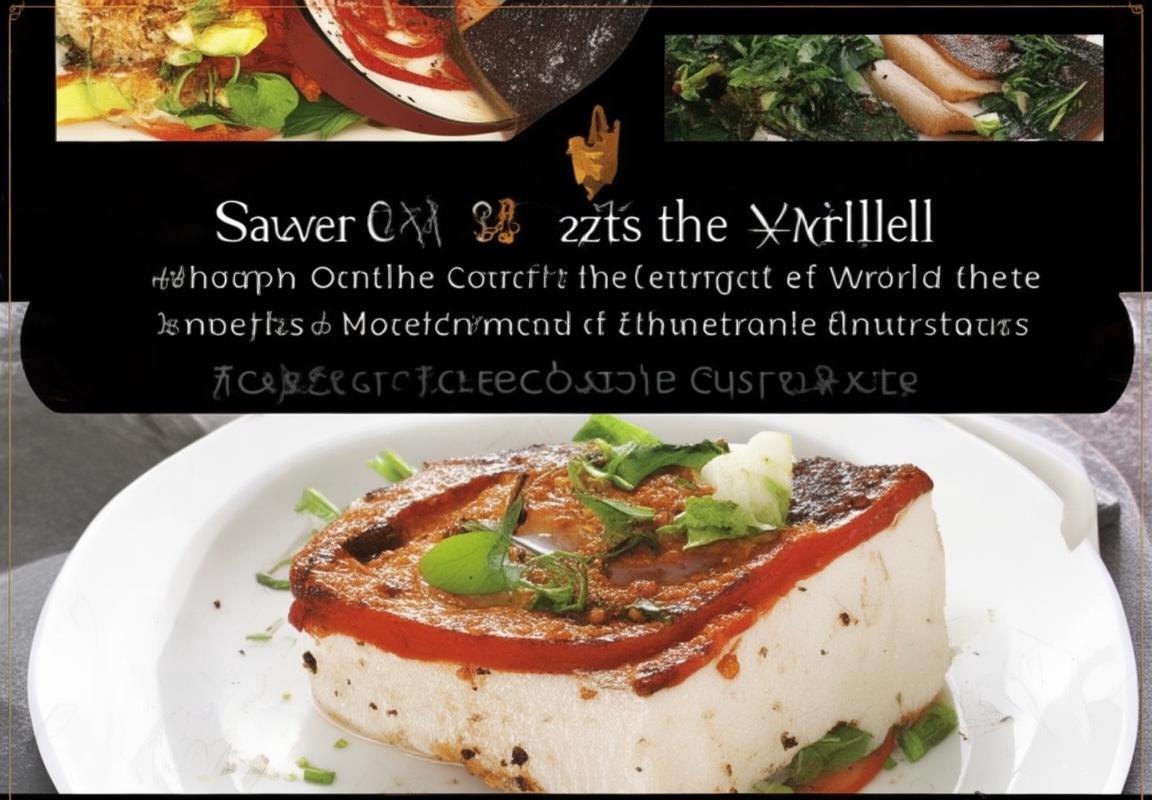
CE Mark and EN 60335: The Standards that Govern Contact Grills
In the bustling kitchens of Europe and America, the contact grill has emerged as a favorite appliance for cooking enthusiasts and busy households alike. To ensure these appliances meet the highest safety and quality standards, they must adhere to the CE marking and the stringent regulations outlined in EN 60335. Let’s delve into what these certifications entail and how they shape the contact grill market.
The CE mark is a symbol of conformity that signifies a product meets the essential health, safety, and environmental protection requirements of the European Union (EU). When a contact grill carries this mark, it tells consumers that the appliance has been thoroughly assessed and complies with all applicable EU directives. This is no small feat, as the CE mark involves a complex certification process that can vary depending on the type of product and its risk level.
Central to the CE mark is the concept of ‘Conformité Européenne,’ or European Conformity. This means that the product has been assessed against a set of harmonized standards that are recognized across the EU. For contact grills, these standards are defined by the European Committee for Electrotechnical Standardization (CENELEC) and are often referred to as the ‘EN’ series of standards.
One of the most critical standards for household appliances, including contact grills, is EN 60335. This standard is a comprehensive set of safety requirements that applies to all electrical household and similar appliances, including their electrical or mechanical interconnections. It’s designed to minimize risks such as electric shock, fire, and mechanical hazards.
EN 60335 covers a wide range of aspects, from design and construction to operational safety and energy efficiency. For contact grills, this means that the following factors are meticulously examined:
-
Electrical Safety: Contact grills, like all electrical appliances, must be designed to prevent electric shock and ensure that the appliance cannot become a fire hazard.
-
Heat Management: Given the nature of contact grills, which cook food by applying heat, the standard requires that the appliance can maintain a stable temperature without overheating or causing burns.
-
Materials Used: The materials that come into contact with food must be safe, non-toxic, and resistant to high temperatures.
-
User Controls: The design of the control panel must be intuitive and easy to use, with safety features to prevent unintended operation.
-
Accessibility of Components: Parts that could pose a risk, such as heating elements, must be well-protected and not easily accessible to children.
-
Information Provided: The appliance must come with clear instructions and safety warnings, including proper usage and maintenance procedures.
To obtain the CE mark, manufacturers must undergo a conformity assessment procedure. This can be self-declaration, where the manufacturer declares the product meets the standards, or it can involve type testing, where a third-party laboratory conducts tests to verify compliance. In some cases, a conformity assessment body may also be involved to audit the manufacturer’s quality management system.
Once a contact grill passes the necessary tests and assessments, it can be legally sold throughout the EU. Similarly, in the United States, contact grills must comply with similar safety standards, such as those set by the Underwriters Laboratories (UL) or the Canadian Standards Association (CSA).
The CE mark and EN 60335 are not just about compliance; they are about consumer confidence. When consumers see the CE mark on a contact grill, they can rest assured that the product has been rigorously tested and meets the highest safety standards. This certification is a crucial factor in the competitive landscape of the kitchen appliance market, as it helps to differentiate products and attract customers who value safety and quality.
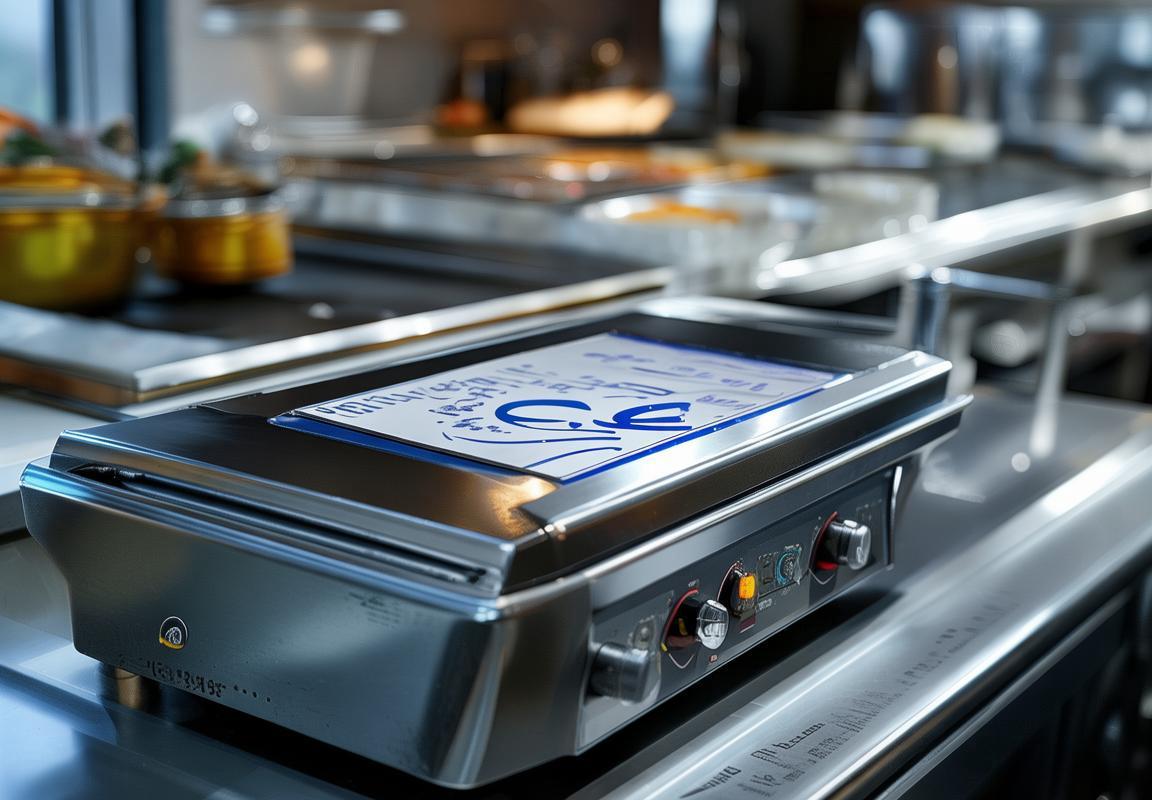
Contact Grills: A Growing Segment in the Kitchen Appliance Industry
In recent years, the kitchen appliance industry has seen a surge in popularity for contact grills, a segment that has been quietly growing in both Europe and the United States. These sleek, versatile cooking appliances have found their way into the hearts of home chefs and culinary enthusiasts alike. The reasons for this rise are multifaceted, encompassing technological advancements, health-conscious consumer trends, and the convenience they offer in the fast-paced lives of modern households.
The compact size of contact grills makes them a perfect addition to small kitchens and urban apartments where space is at a premium. Their ability to cook a variety of foods with a unique texture and taste has been a hit with those seeking an alternative to traditional cooking methods like frying or grilling. The even distribution of heat and the ability to lock in juices make contact grills a favorite for cooking meats, vegetables, and even sandwiches.
As health concerns continue to rise, the low-fat, low-calorie benefits of contact grills have made them a staple in many health-conscious households. The idea of cooking food without adding excessive oil or fat resonates with individuals aiming to maintain a balanced diet. This health angle has also contributed to the growing appeal of contact grills, as they provide a way to enjoy flavorful meals without compromising on health goals.
The convenience factor cannot be overlooked. Contact grills often come with features like adjustable heat settings, non-stick surfaces, and easy-to-clean designs. These attributes make them a go-to appliance for busy professionals, parents, and anyone looking to streamline their cooking routine. The quick cooking time and the ability to prepare multiple meals simultaneously on some models have also contributed to their popularity.
The versatility of contact grills extends beyond just cooking. Many models come with removable plates, allowing users to switch between cooking meats, pancakes, or even sandwiches. This flexibility has made them a must-have for those who enjoy experimenting with different recipes and cooking techniques.
Moreover, the market for contact grills has been further bolstered by the influence of food culture and cooking shows. As more people watch chefs on television use contact grills to create professional-looking dishes, the desire to replicate those results at home has surged. This has created a wave of excitement around contact grills, with consumers eager to try out the latest models and features.
The growth in the contact grill market is also being driven by the aging population. As people age, they often prefer appliances that are easy to use and maintain. Contact grills fit this criterion perfectly, with their straightforward operation and user-friendly designs. This demographic trend has been a significant factor in the steady increase in sales of these appliances.
Additionally, the rise of e-commerce has made contact grills more accessible than ever before. Online shopping allows consumers to compare brands, read reviews, and make informed purchasing decisions without leaving their homes. This ease of access has opened up the market to a wider audience, further fueling the segment’s growth.
The demand for smart kitchen appliances has also played a role in the expansion of the contact grill market. As consumers seek to integrate technology into their daily lives, contact grills with smart features, such as remote control and Wi-Fi connectivity, are becoming increasingly popular. These advanced features not only enhance the cooking experience but also cater to the needs of tech-savvy consumers.
In conclusion, the segment of contact grills within the kitchen appliance industry has been experiencing significant growth, driven by a combination of factors including health trends, convenience, versatility, and technological advancements. As the market continues to evolve, we can expect to see further innovation and increased adoption of contact grills in homes across Europe and the United States.
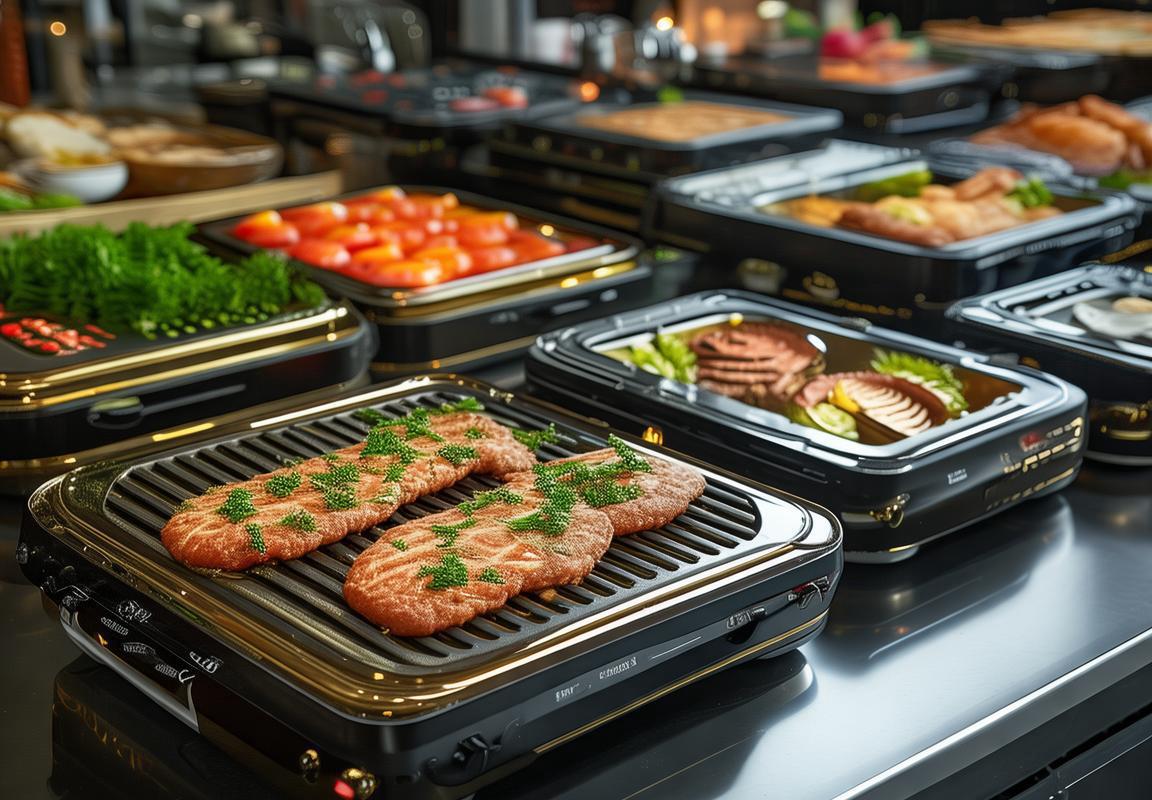
The Role of CE EN 60335 Contact Grill Compliance in Consumer Safety
In the bustling kitchen appliance industry, contact grills have emerged as a segment that’s not just heating up but also gaining significant traction. These versatile cooking tools, known for their ability to sear, brown, and grill food with precision, have become a staple in many modern kitchens. The growth of contact grills can be attributed to several factors, each contributing to their popularity and market expansion.
The convenience factor is a major draw. Contact grills are compact, easy to use, and require minimal cleanup, making them perfect for busy households and individuals who appreciate a quick and efficient cooking experience. Their ability to mimic the outdoor grill flavor indoors has also made them a favorite among grill enthusiasts who may not have the space or time for traditional outdoor grilling.
Moreover, the health benefits of contact grills cannot be overlooked. With their ability to cook food at lower temperatures and with less oil, they offer a healthier alternative to deep frying or high-heat cooking methods. This health-conscious trend has been a significant driver in the growth of the contact grill market.
As the demand for contact grills has surged, so too has the need for high-quality, reliable products. Consumers are increasingly seeking appliances that not only deliver on performance but also on safety. This is where compliance with standards like the CE mark and EN 60335 comes into play.
The CE mark, which stands for Conformité Européenne, is a certification that signifies that a product meets all the essential health, safety, and environmental protection requirements of the European Union. For contact grills, obtaining the CE mark is not just a legal requirement but also a testament to the manufacturer’s commitment to quality and safety. It ensures that the product has been tested and meets the necessary standards for sale within the EU market.
EN 60335, on the other hand, is a set of safety standards specifically designed for household and similar electrical appliances. This standard covers a wide range of electrical appliances, including contact grills, and outlines the necessary safety measures to prevent electrical, thermal, mechanical, and chemical hazards. Compliance with EN 60335 is crucial for ensuring that contact grills are safe to use, as they often involve high temperatures and electrical components.
The role of CE EN 60335 compliance in consumer safety is multifaceted. For starters, it guarantees that the contact grill has been designed with the user’s safety in mind. This includes the use of heat-resistant materials, secure electrical connections, and safety features like automatic shut-off mechanisms. These features are essential in preventing accidents such as burns, electrical shocks, and fires.
Furthermore, compliance with these standards ensures that the contact grill performs as advertised. Consumers can trust that the appliance will operate at the specified temperature and for the intended duration without the risk of overheating or malfunction. This reliability is particularly important for products that are used frequently and may be left unattended for extended periods.
In addition to safety, compliance with CE EN 60335 also contributes to the overall quality of the contact grill. It means that the product has been manufactured to a high standard, with attention to detail in areas such as the durability of components and the effectiveness of heat distribution. This not only enhances the user experience but also extends the lifespan of the appliance.
For manufacturers, adhering to these standards is not just about meeting regulatory requirements; it’s also about building trust with consumers. A contact grill that carries the CE mark and complies with EN 60335 signals to customers that the product has been thoroughly tested and meets the highest safety standards. This can be a significant differentiator in a competitive market, where consumer confidence is key.
Lastly, compliance with these standards also has global implications. While the CE mark is specific to the European market, the principles of EN 60335 are recognized worldwide. This means that a contact grill that meets these standards can potentially be sold in other countries that recognize these international safety protocols. This opens up new markets and opportunities for growth for manufacturers.
In conclusion, the role of CE EN 60335 compliance in consumer safety for contact grills is pivotal. It not only ensures that the product is safe to use but also enhances its quality and reliability. For consumers, this means peace of mind when investing in a contact grill, knowing that it has been designed and manufactured with their safety as the top priority.
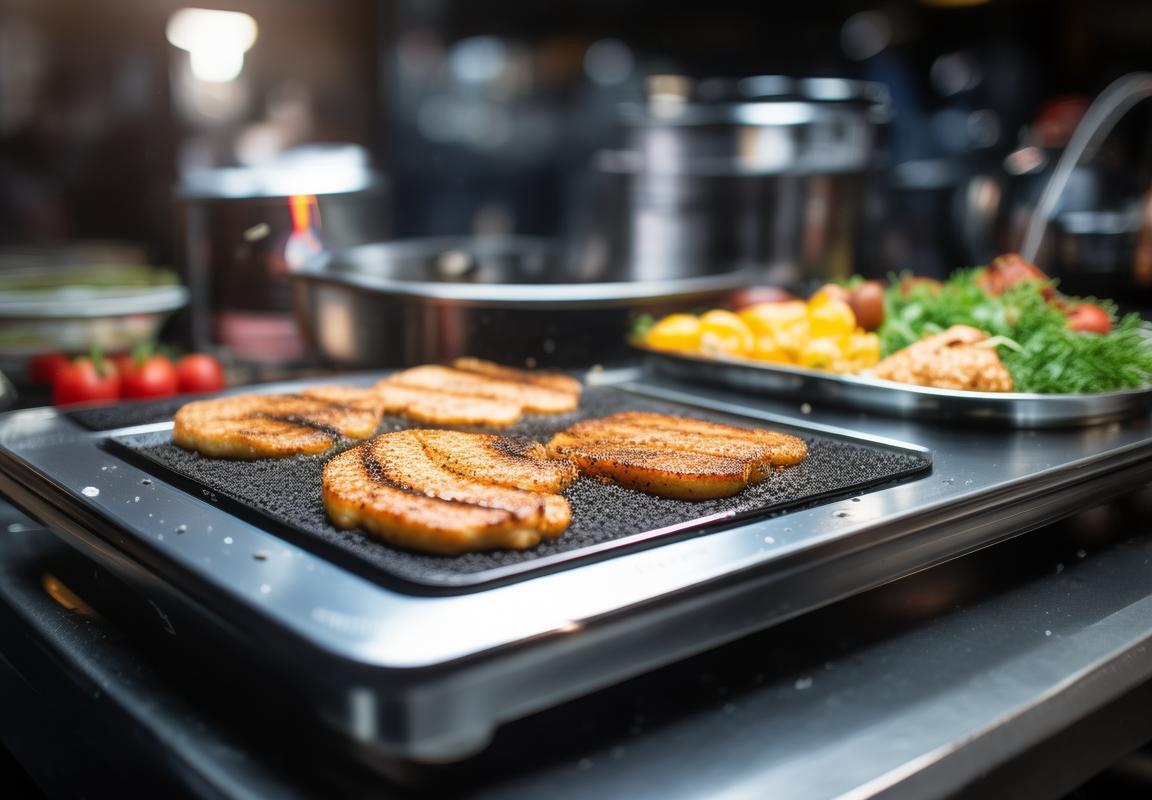
Key Players in the Contact Grill Market
In the bustling landscape of kitchen appliances, contact grills have carved out a niche for themselves, becoming a staple in many modern kitchens. These compact, versatile cooking tools have seen a surge in popularity, and several key players have emerged, each bringing their unique touch to the market.
The market is dominated by brands that have not only mastered the art of grill design but also ensured compliance with stringent safety standards, such as the CE mark and EN 60335. From well-established manufacturers to innovative startups, here’s a look at some of the key players shaping the contact grill market.
Brand A has been a household name in kitchen appliances for decades, and their entry into the contact grill market was met with excitement. Known for their durability and innovative features, Brand A’s contact grills are a favorite among chefs and home cooks alike. Their commitment to quality is evident in the sleek design and the advanced heating elements that provide even cooking and precise temperature control.
Brand B has made a name for itself by focusing on eco-friendly and energy-efficient appliances. Their contact grills are not only designed to minimize energy consumption but also to reduce carbon footprint. The brand’s eco-conscious approach has resonated with environmentally aware consumers, making them a standout in the market.
Brand C is a relative newcomer but has quickly gained traction with their line of smart contact grills. These grills come equipped with Bluetooth connectivity, allowing users to control the cooking process from their smartphones. The brand’s focus on technology and convenience has attracted tech-savvy consumers who appreciate the ability to monitor and adjust their grills remotely.
Brand D has a reputation for creating high-quality, affordable kitchen appliances, and their contact grills are no exception. They offer a range of models that cater to different budgets and cooking needs, from basic models for everyday use to premium models with advanced features. The brand’s commitment to offering great value has made them a go-to choice for many consumers.
Brand E has a strong presence in the European market, where they are known for their innovative and stylish kitchen appliances. Their contact grills are a testament to their design aesthetic, featuring sleek lines and a variety of color options. The brand’s focus on both form and function has helped them carve out a niche among consumers who value aesthetics as much as performance.
Brand F specializes in professional-grade kitchen appliances, and their contact grills are no different. Designed for commercial use, these grills are built to withstand heavy-duty cooking sessions and are favored by restaurants and caterers. The brand’s focus on robust construction and reliable performance has made them a trusted choice in the commercial kitchen space.
Brand G has made a name for itself by focusing on health-conscious consumers. Their contact grills are designed to provide a healthier cooking option, with non-stick surfaces that reduce the need for excess oil. The brand’s commitment to wellness is reflected in their marketing and product development, making them a favorite among those looking to improve their diet.
Brand H is known for its extensive range of kitchen appliances, and their contact grills are no exception. They offer a wide variety of models, from compact countertop units to larger, countertop grills that can accommodate larger meals. The brand’s versatility and the breadth of their product line have helped them appeal to a wide range of consumers.
These key players in the contact grill market have each brought something unique to the table, from innovation and technology to affordability and design. As the market continues to grow, these brands are likely to continue leading the way, offering consumers a diverse array of options to suit their cooking styles and preferences.
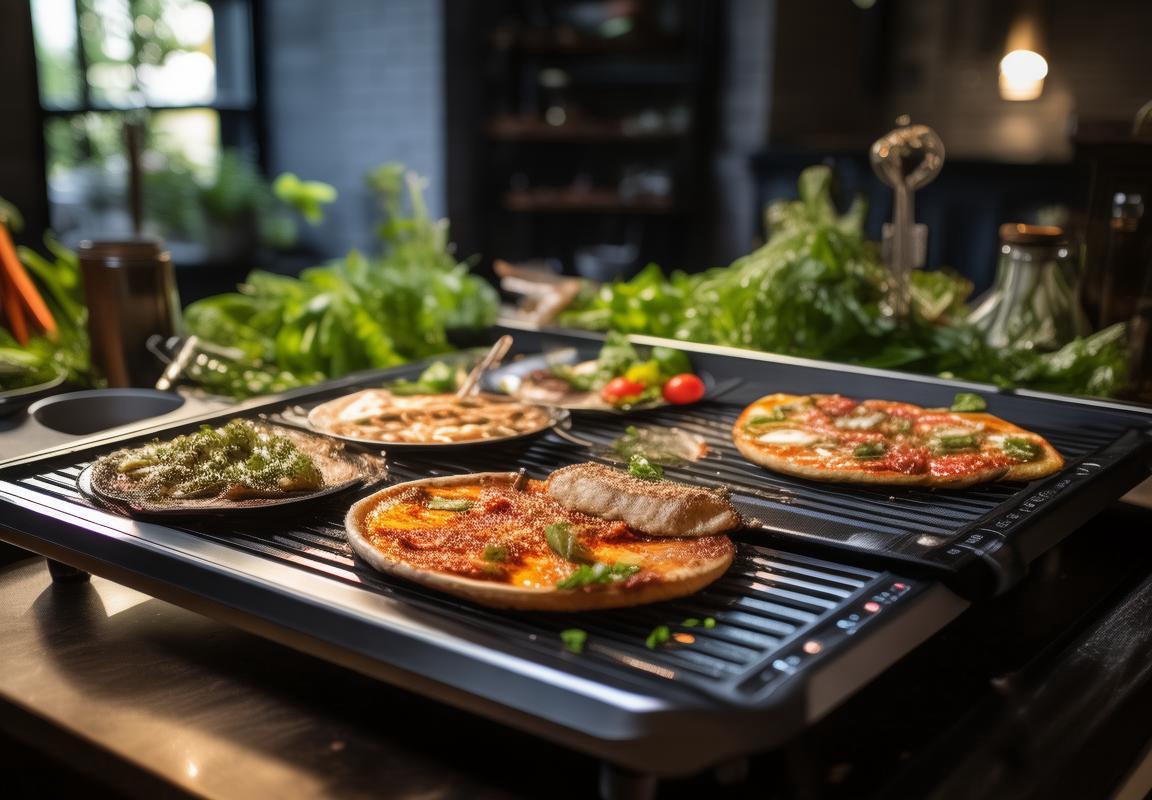
Distribution Channels and Consumer Preferences
In the ever-evolving kitchen appliance industry, contact grills have carved out a niche for themselves, becoming a staple in many modern kitchens. The way these grills are distributed and the preferences of consumers play a significant role in their market success. Let’s delve into the intricate details of how contact grills reach consumers and what drives their purchasing decisions.
The retail landscape for contact grills is diverse, offering a range of options from high-end specialty stores to online marketplaces. Supermarkets and department stores often feature these appliances alongside other kitchen gadgets, catering to a broad customer base. However, there are distinct channels that have emerged as key players in the distribution of contact grills.
One such channel is the specialty kitchen appliance stores, which focus exclusively on products designed to enhance culinary experiences. These stores often carry a curated selection of contact grills, offering expert advice and showcasing the latest models. They are particularly popular with consumers who are passionate about cooking and are willing to invest in high-quality appliances.
Online retail has seen a meteoric rise, becoming a go-to channel for many consumers. Websites like Amazon, eBay, and specialized kitchen appliance stores offer a vast array of contact grills at varying price points. The convenience of browsing and purchasing from the comfort of one’s home is a major draw, especially for tech-savvy consumers. Online marketplaces also provide easy access to customer reviews, which can significantly influence buying decisions.
Another notable distribution channel is the direct-to-consumer approach adopted by some manufacturers. By selling directly online, these companies can eliminate the middleman and offer competitive pricing. This model is particularly effective for brands looking to build a strong online presence and a loyal customer base. It also allows manufacturers to gather valuable feedback directly from consumers.
Consumer preferences in the contact grill market are shaped by a combination of factors, including price, functionality, brand reputation, and design. Budget-conscious shoppers are drawn to entry-level models that offer essential features without breaking the bank. These consumers often look for appliances that deliver value for money, focusing on durability and ease of use.
On the other end of the spectrum, there’s a segment of consumers who are willing to invest in premium contact grills. They seek out appliances that not only perform well but also boast advanced features like adjustable heat settings, non-stick surfaces, and programmable cooking modes. These consumers are often brand-loyal and value the innovation and quality associated with high-end products.
Design plays a crucial role in attracting consumers, especially in the highly visual kitchen appliance market. sleek and modern designs have become increasingly popular, appealing to those who want their kitchen gadgets to match their aesthetic preferences. The integration of smart technology, such as Bluetooth connectivity for remote control or monitoring cooking progress, is also a growing trend that caters to tech-savvy consumers.
Brand reputation is another pivotal factor in consumer preferences. Established brands with a history of reliable and innovative products often have a loyal following. Consumers who trust these brands are more likely to invest in their contact grills, even if they come at a higher price point. Word-of-mouth recommendations and positive online reviews further solidify the brand’s position in the market.
In recent years, there has been a surge in eco-friendly and sustainable consumer products, including kitchen appliances. As a result, some contact grill manufacturers have started to prioritize environmental considerations in their designs, such as using recycled materials and energy-efficient technologies. This shift in consumer preference has opened up new opportunities for brands that can align with these values.
The distribution channels and consumer preferences in the contact grill market are dynamic and multifaceted. From the variety of retail options to the diverse range of consumer needs, the market for contact grills continues to grow and adapt. As manufacturers and retailers navigate this landscape, understanding the channels that reach consumers and the preferences that drive their purchasing decisions is key to sustained success.

Technological Innovations in Contact Grills
The evolution of contact grills has been marked by a series of technological innovations that have enhanced their functionality, user experience, and appeal to consumers. Here’s a look at some of the key technological advancements in this segment of the kitchen appliance industry:
-
Advanced Heat Distribution SystemsModern contact grills are equipped with advanced heat distribution systems that ensure even cooking. These systems often include multiple heating elements and temperature control mechanisms, which prevent hotspots and allow for consistent grilling across the entire surface.
-
Non-Stick CoatingsThe introduction of high-quality non-stick coatings has made cleaning contact grills much easier and has also improved the longevity of the appliance. These coatings reduce the need for excessive oil, making the food healthier and the grilling process more convenient.
-
Variable Temperature SettingsMany contact grills now come with variable temperature settings, allowing users to adjust the heat according to the type of food being cooked. This feature is particularly beneficial for those who enjoy grilling a variety of meats, vegetables, and cheeses, as it ensures that each item is cooked to perfection.
-
Digital Temperature ControlDigital temperature control has become a standard feature in many high-end contact grills. These digital displays provide precise temperature readings and allow users to set and maintain the desired cooking temperature with greater accuracy.
-
Removable Parts for Easy CleaningInnovations in design have led to contact grills with removable parts, such as the cooking plates, grids, and drip trays. This not only simplifies the cleaning process but also makes it easier to sanitize the appliance and extend its lifespan.
-
Energy EfficiencyManufacturers have focused on making contact grills more energy-efficient, reducing both operational costs and environmental impact. These appliances are designed to heat up quickly and maintain consistent temperatures without wasting energy.
-
Integrated Searing StationsSome contact grills now come with integrated searing stations, which allow users to sear food at high temperatures to lock in flavors and create a perfect sear. This feature is especially popular among those who appreciate the distinct taste and texture that searing adds to meats and cheeses.
-
Smart Technology IntegrationThe integration of smart technology has brought contact grills into the realm of smart kitchen appliances. With Wi-Fi connectivity and smartphone apps, users can control their grills remotely, set timers, and even monitor the cooking process from anywhere in their home.
-
Healthier Cooking OptionsTechnological advancements have also led to healthier cooking options. For instance, some contact grills are designed to minimize smoke and grease splatters, which can reduce the amount of smoke and fat in the kitchen air, making for a healthier cooking environment.
-
Versatility in DesignThe latest contact grills are not just for grilling; they often come with multiple cooking functions, such as baking, toasting, and even air frying. This versatility has made them a staple in many kitchens, as they can replace several appliances with a single unit.
-
Safety FeaturesSafety has been a major focus in technological innovations. Many contact grills now include features like automatic shut-off, child safety locks, and cool-touch handles to prevent accidents and burns.
-
Customizable Cooking ProfilesSome models offer customizable cooking profiles, allowing users to save their favorite settings and cooking times. This feature is particularly useful for those who enjoy grilling and want to replicate their favorite recipes with ease.
These technological innovations have not only improved the cooking experience but have also broadened the appeal of contact grills, making them a must-have for both casual cooks and culinary enthusiasts. As technology continues to evolve, we can expect even more sophisticated features that enhance the functionality and convenience of these kitchen appliances.
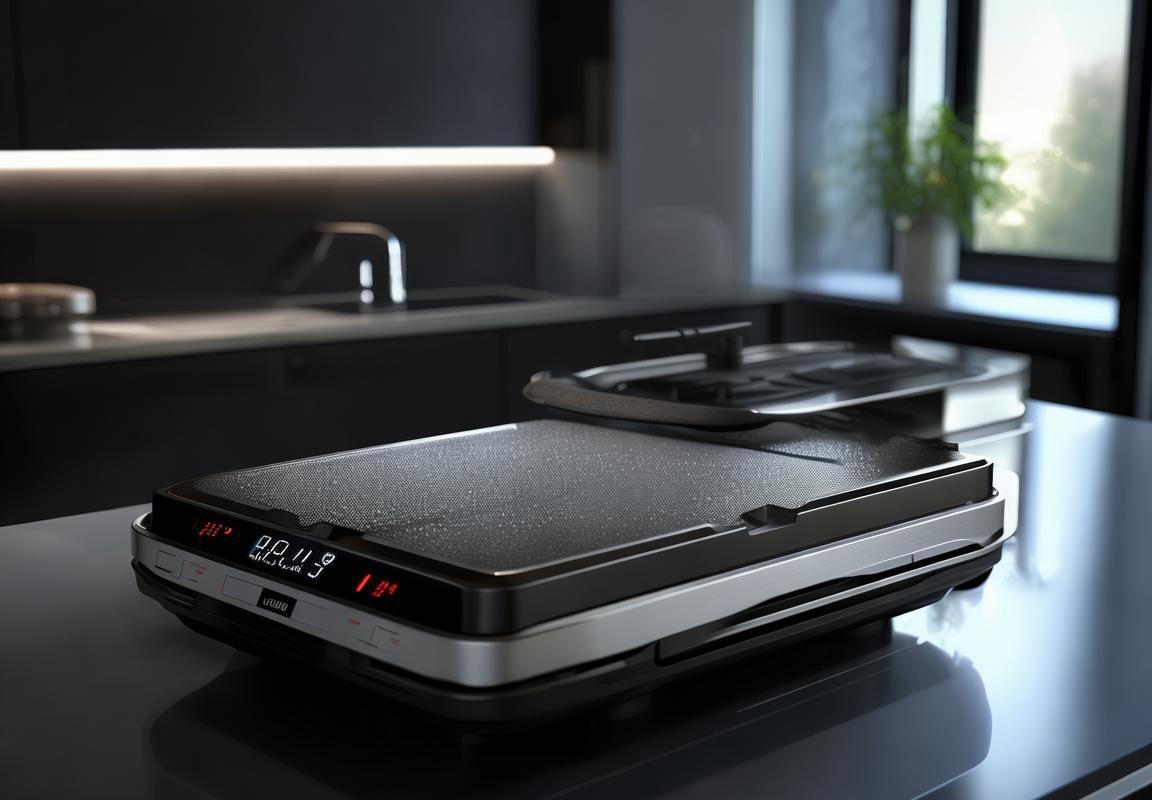
Challenges and Opportunities in the Contact Grill Market
In the competitive landscape of kitchen appliances, contact grills have emerged as a segment that’s not just heating up but also evolving rapidly. From traditional flat-top grills to sleek, multi-functional units, the market is witnessing a surge in innovation and consumer interest. Here’s a closer look at the challenges and opportunities that shape this dynamic market.
The demand for convenience and health-conscious cooking methods has propelled the contact grill market. As consumers seek out appliances that can offer a healthier alternative to traditional cooking methods like frying, contact grills have stepped into the spotlight. However, this popularity has brought its own set of challenges and opportunities.
One of the primary challenges in the contact grill market is ensuring consistent quality and performance across various brands and models. With so many options available, consumers can be overwhelmed by the choices, and manufacturers must compete to stand out. This competition often leads to innovation, but it also means that companies must invest heavily in research and development to keep up with the latest trends.
The opportunity here lies in addressing these challenges by offering unique features that set a brand apart. For instance, some contact grills now come with adjustable temperature controls, allowing users to achieve the perfect sear on their meats. Others have integrated smokeless cooking technology, which appeals to health-conscious consumers who want to enjoy grilled flavors without the added risks of smoke inhalation.
Another challenge is the need for education among consumers. While many are aware of the benefits of contact grills, not everyone understands how to use them effectively. This lack of knowledge can lead to dissatisfaction if the appliance doesn’t perform as expected. Opportunities arise for manufacturers to invest in user-friendly designs, comprehensive manuals, and even cooking tutorials to help consumers get the most out of their purchase.
The market also faces regulatory challenges. Ensuring that all contact grills meet safety standards is crucial, and compliance with regulations like CE and EN 60335 is non-negotiable. This compliance not only protects consumers but also helps to build trust in the brand. The opportunity here is to use these certifications as a selling point, emphasizing the commitment to safety and quality.
Moreover, the rise of e-commerce has presented both challenges and opportunities. Online sales have made it easier for consumers to compare brands and prices, but it also means that manufacturers must navigate a more competitive digital landscape. The challenge is to create a strong online presence and engage with customers through social media and targeted advertising. The opportunity is to leverage data analytics to understand consumer behavior and tailor marketing strategies accordingly.
Environmental concerns have also become a significant factor in the contact grill market. As consumers become more environmentally conscious, there’s a growing demand for appliances that are energy-efficient and sustainable. This challenge requires manufacturers to innovate not just in terms of product design but also in the supply chain and manufacturing processes. The opportunity is to position the brand as an eco-friendly choice, appealing to the environmentally conscious consumer.
Lastly, the contact grill market is influenced by global trends and economic fluctuations. Economic downturns can lead to a decrease in consumer spending, affecting the sales of high-end or luxury contact grills. Conversely, economic upswings can drive demand for premium features and higher-end models. The challenge is to anticipate these trends and adjust the product line and pricing strategies accordingly. The opportunity is to diversify the product range to cater to different market segments and economic conditions.
In summary, the contact grill market is a landscape of constant change, with challenges and opportunities that require a strategic approach. By focusing on innovation, consumer education, regulatory compliance, and sustainability, manufacturers can navigate these complexities and capitalize on the growing demand for contact grills.
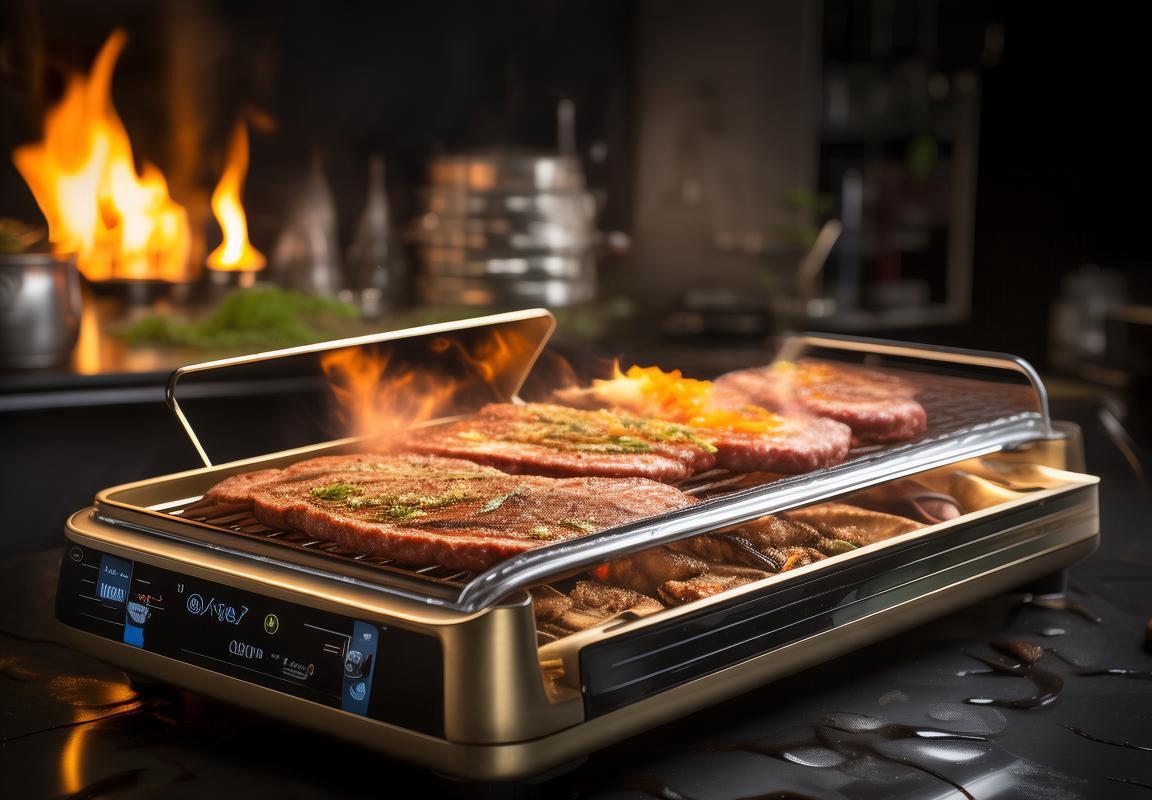
Conclusion: The Future of Contact Grills in Europe and the U.S
The contact grill market, once a niche player, has now become a staple in many European and American kitchens. As the demand for convenience and health-conscious cooking methods continues to rise, the industry is poised for significant growth. However, this expansion is not without its challenges and opportunities. Here’s a look at what the future holds for contact grills in the European and U.S. markets.
The shift towards healthier lifestyles has been a major driver in the growth of the contact grill market. With a focus on minimizing oil usage and providing a searing heat that locks in flavors, these appliances are seen as a healthier alternative to traditional frying methods. As more consumers become aware of the benefits, the demand for contact grills is expected to surge.
The integration of smart technology is another trend that’s shaping the future of contact grills. With features like digital temperature controls, preset cooking modes, and even Wi-Fi connectivity, modern contact grills offer a level of convenience and precision that was once unimaginable. This technological advancement is likely to attract tech-savvy consumers and further solidify the position of contact grills as a must-have kitchen appliance.
Despite the growth, the contact grill market faces several challenges. One significant hurdle is the high cost of entry for new players. Developing a product that meets safety standards, such as CE EN 60335, can be expensive, and maintaining a competitive price point can be difficult. Additionally, the market is becoming increasingly saturated with similar products, making it challenging for brands to stand out.
Another challenge is the perception of contact grills as a luxury item. While they offer numerous benefits, the initial cost can be prohibitive for many consumers. To address this, manufacturers might consider more affordable options or subscription-based services that allow customers to try before they buy.
On the flip side, there are ample opportunities in the contact grill market. One such opportunity lies in targeting niche markets, such as gluten-free or vegan consumers, by offering specialized grilling solutions. The rise of outdoor living spaces has also opened up new opportunities, as many consumers are looking for portable and easy-to-use cooking appliances for their patios and balconies.
The environmental consciousness among consumers is another opportunity for growth. As awareness of sustainability increases, contact grill manufacturers could capitalize on this by promoting their products as eco-friendly and energy-efficient. This could include using recycled materials in the manufacturing process or designing appliances that reduce energy consumption.
In Europe and the U.S., the contact grill market is also influenced by changing dietary trends. The growing popularity of ethnic cuisines, such as Mediterranean and Asian, has spurred the development of contact grills that can handle a variety of cooking techniques and flavors. This diversification in the market allows manufacturers to cater to a broader audience and appeal to food enthusiasts who are always on the lookout for new culinary experiences.
The future of contact grills in Europe and the U.S. is bright, but it’s not without its complexities. As the market evolves, it’s crucial for manufacturers to stay attuned to consumer needs and preferences. By focusing on innovation, sustainability, and catering to niche markets, the contact grill industry can continue to grow and thrive. Whether it’s through technological advancements, new distribution channels, or strategic partnerships, the opportunities for expansion are vast. As the market continues to expand, it’s clear that contact grills are not just a trend but a vital component of the modern kitchen.